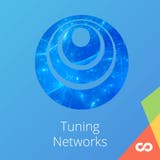 This course teaches the “magic” of getting deep learning to work well. Rather than the deep learning process being a black box, the course explains what drives performance, and enables one to be able to systematically produce good results.
This course teaches the “magic” of getting deep learning to work well. Rather than the deep learning process being a black box, the course explains what drives performance, and enables one to be able to systematically produce good results.
This course teaches you to:
- Understand industry best-practices for building deep learning applications.
- Be able to effectively use the common neural network performance enhancements like initialization, L2 and dropout regularization and Batch normalization, gradient checking
- Be able to implement and apply a variety of optimization algorithms, such as mini-batch gradient descent, Momentum, RMSprop and Adam, and check for their convergence.
- Understand new best-practices for the deep learning era of how to set up train/dev/test sets and analyze bias/variance
- Be able to implement a neural network in TensorFlow.
Lectures include:
- Optimization algorithms
- LMini-batch gradient descent
- Understanding mini-batch gradient descent
- Exponentially weighted averages
- Understanding exponentially weighted averages
- Bias correction in exponentially weighted averages
- Gradient descent with momentum
- RMSprop
- Adam optimization algorithm
- Learning rate decay
- The problem of local optima
This is the second course of the Deep Learning Specialization.
The card below has my certification and license information.
